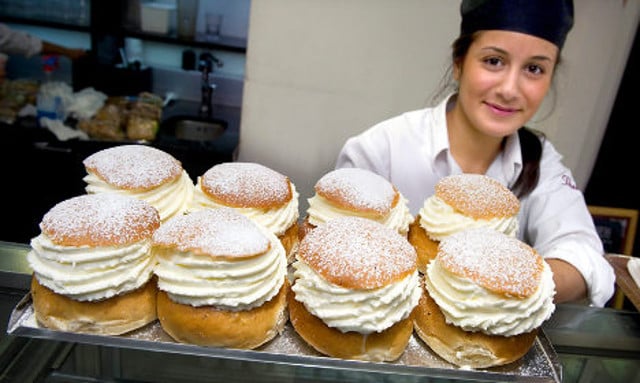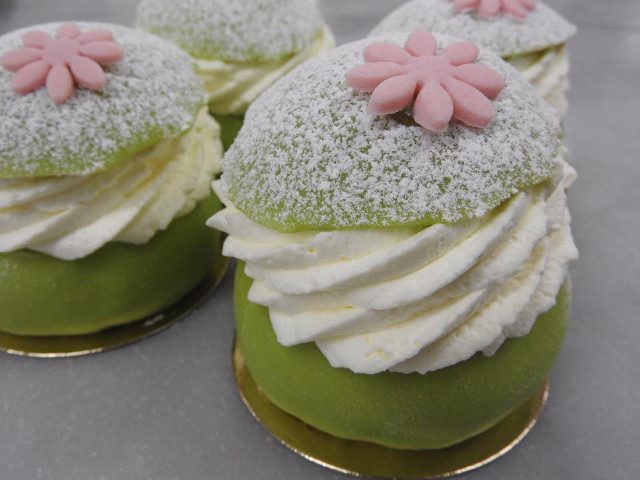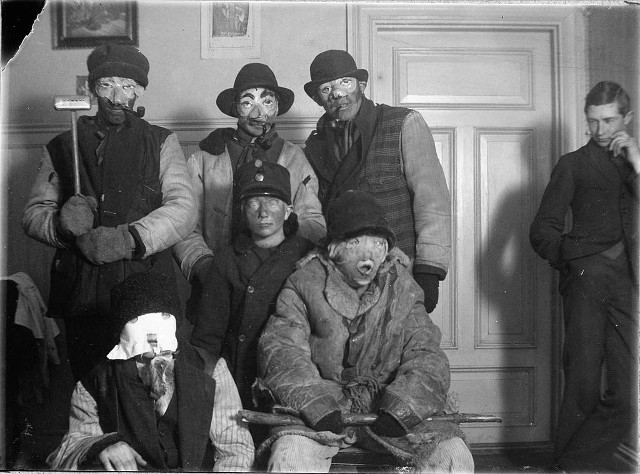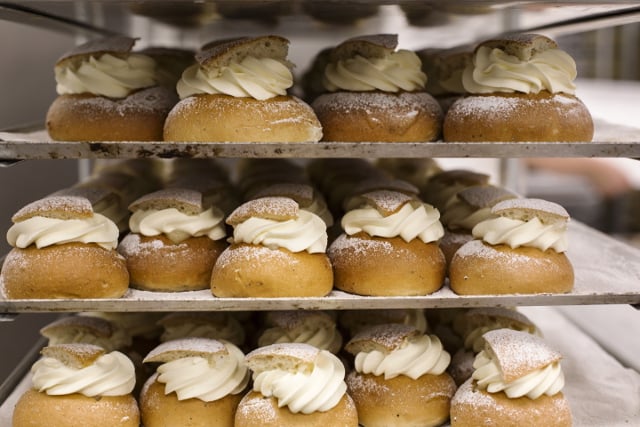1. Not a pancake in sight
Like Pancake Tuesday in the Commonwealth countries, Fettisdagen falls on the day immediately preceding Ash Wednesday each year, and involves the often excessive consumption of a particular sweet treat. Unlike in many of the Anglo nations however, pancakes aren’t the food of choice. Instead, the sweet treat of the day is the mighty semla. What’s that, I hear you cry?
2. The semla
Once described by The Local’s Paul O’Mahony as “the Keith Richards of the Swedish bun world” Sweden’s excess-inducing semla is a sweet bun combined with loads of whipped cream, almond paste, and an unhealthy dose of sugar. Oh, and did we mention that some people like to eat them dipped in warm milk?
Putting one of these things away is a battle, putting several away is a real struggle, but people still try.

3. Where to get one
As with pretty much all holiday-related goods these days, the availability of semla is no longer limited to the period around Fettisdagen itself, and it seems like the first sighting of the year now takes place when the dust has barely settled on the previous edition.
Almost everywhere that sells food will stock a variation of the bun, but be warned: not all semlor are created equally. You’ll probably want to avoid the ones which have been sitting in the cabinet of the convenience store at your local train station for the last 10 years, for example.
Instead, go traditional and visit your nearest old-fashioned konditori. Chances are they’ve been making semlor for years and know how to do it right. The traditional bakeries are everywhere in Sweden, so just follow your eyes (and your nose) and look for windows filled with cakes. Ta-da!
If you aren’t in Sweden, make sure to check out our recipe for semlor here.

4. Creamy controversy
There are few things in Sweden more beloved than semlor, so attempting to tinker with the recipe is a controversial move. That hasn’t stopped some pastry chefs from having a go however, with once example being Markus Ekelund, who combined the bun with another Swedish classic, the marzipan-heavy princess cake (prinsesstårta).
The resulting monstrosity is the princess semla, which basically looks like a green semla with a decorative flower on top. Don’t be fooled though: opinions are strong, and feelings on the creation appear to be mixed.
The bun is less controversial than Ekelund’s previous deconstruction of the semla though, the semoothie, which as you may be able to guess, was a smoothie made out of the cakes. Other bizarre hybrids include a semla combined with a saffron-filled lussebulle.

5. The name
Fettisdagen may be the most commonly used term for the pre-Lent feast, but there are a number of other Swedish names for the day. Semmeldagen, named after the creamy bun, is self-explanatory. Other, more old-fashioned names are fläsktisdag (pork Tuesday) and smörtisdag (butter Tuesday) which are also related to indulgence, and vittisdag (white Tuesday) which comes from the use of white flour while baking.
6. Trick or bun?
As a parting fact we’ll leave you with an older tradition once associated with Fettisdagen but long since forgotten, to the degree that our Swedish editor hadn’t even heard of it!
Once upon a time the day also involved dressing up in odd costumes as “Fettisdagsgubbar” (literally “Fat Tuesday old men“) then going begging for food in a sort of trick-or-treat like manner. Fettisdagen was the one day everyone had to say yes and dish out some food to the poor souls, apparently.
The tradition has long been dead across most of Sweden, but still survives in Alfta, Hälsingland, where it is now carried out by cute kids in a sort of pre-Lent Halloween.
To prove we’re not making it up, here’s a picture of a bunch of creepy looking Fettisdagsgubbar from the early 1900s. There’s a horror movie script begging to be written here.




 Please whitelist us to continue reading.
Please whitelist us to continue reading.